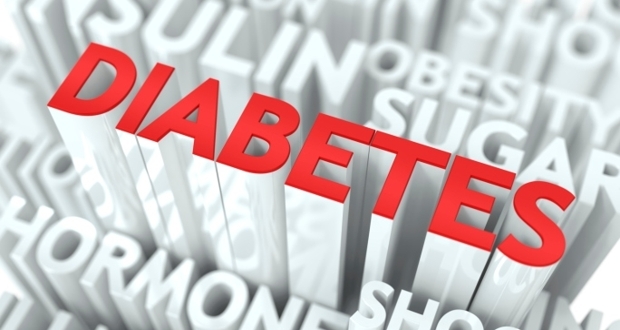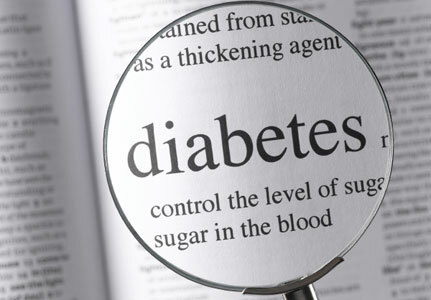Violation of carbohydrate metabolism associated with the lack of insulin or insensitivity of cells to this hormone is called diabetes mellitus.
This chronic disease is characterized by multiple organ damage.
How glucose metabolism occurs
Glucose is the basis of the body's energy supply. Food and drinks contain different carbohydrates, simple and complex:
- glucose;
- starch;
- sucrose;
- fructose and others.
In the process of digestion under the action of enzymes of the gastrointestinal tract, all carbohydrates are split up to glucose, and then absorbed into the blood. When the glucose level reaches a threshold of 5.5 mmol / liter, a signal enters the pancreas cells. These cells are called islets of Langerhans, they carry out the synthesis of insulin.
Insulin receptors are found in virtually all tissues and organs, with the exception of the brain.
Insulin is responsible for maintaining blood glucose levels from 3.3 to 5.5 mmol / liter.
After eating, the blood glucose level increases. Insulin promotes the deposition of excess glucose in liver tissue and in muscles in the form of glycogen. For what? Such stocks of glucose are created in the body in order to ensure a normal energy metabolism when the blood level is lowered.
This process is also regulated by insulin. With a decrease in blood glucose levels of less than 3.3 mmol / liter, insulin glycogen begins to exit the depot.
Species and causes of

disease If the pancreas does not produce insulin, or cells become insensitive to this hormone, diabetes mellitus develops. This name was caused by a high level of sugar in the blood and urine.
There are several types of diabetes:
- insulin-dependent, type I diabetes;
- is non-insulin dependent, type II diabetes;
- diabetes of pregnant women;
- secondary diabetes, develops as a result of endocrine diseases, eating disorders, taking medications.
Type 1 diabetes
Type I diabetes develops if most or all of the pancreatic islets do not produce insulin. This pathology can be congenital or develops as a result of the transferred diseases:
- of mumps( mumps);
- varicella;
- measles rubella;
- of hepatitis.
These diseases are of viral origin. In these cases, diabetes does not develop as a result of the direct effects of viruses on the pancreas, but because of the autoimmune process. Those.the islets of Langerhans are dying under the influence of immune complexes, which can arise in response to viral aggression.
The disease begins mainly in childhood or adolescence.
Type 2 diabetes
Type II diabetes, or non-insulin dependent, develops due to insulin resistance of cells to insulin. In this case, the hormonal function of the pancreas can not suffer. The hormone is produced, but there are no receptors to it. Either receptors exist and bind to insulin, but there is no decrease in sugar in the blood. This condition is called insulin resistance.
The disease develops after 40 years on the background of other metabolic disorders. Most people with type II diabetes are overweight and have high blood pressure.
The consumption of a large number of sweet foods partly increases the risk of developing diabetes. Sweet promotes the formation of excess weight, and also provokes the development of metabolic disorders.
Diabetes of pregnant women
Diabetes of pregnant women is a transitory, or transitory form of the disease. Disorders of glucose metabolism in this case are temporary and pass on their own after the termination of pregnancy.
However, such a feature of the endocrine system during the period of gestation means that with the further development of metabolic disorders there is a risk of developing type II diabetes. Therefore, if such pathology develops during pregnancy, after giving birth and for the rest of her life, it is recommended that a woman carefully select a diet to reduce the risk of obesity .First of all, you will have to limit the consumption of sweet.
Secondary diabetes
Secondary diabetes develops after a number of diseases and manipulations:
- chronic inflammation of the pancreas;
- endocrine diseases: adrenal and pituitary tumors;
- use of certain drugs that inhibit the synthesis of insulin. For example, high doses of estrogen or glucocorticoids, or psychotropic drugs.
Apart from these conditions, a violation of the synthesis or susceptibility of cells to insulin can develop against a background of changes in diet. In recent years, the term-MODY diabetes has emerged, or a mature type of diabetes in young people. This condition provokes gross eating disorders, namely - enthusiasm for fast food and foods with a high content of trans fats. The development of insulin resistance is also promoted by the use of sweet carbonated drinks such as Coca-Cola. Such drinks contain a huge amount of hidden sugar, about 20 teaspoons per 200 ml.
Symptoms of insulin-dependent diabetes

Insulin-dependent diabetes develops at a young age, often its signs are expressed from early childhood. For a disease of this type is characteristic:
- Permanent thirst and frequent urination. Thirst causes an increased sugar content in the blood, this is due to an increase in the osmolarity of the plasma. The increase in the amount of urine is proportional to the liquid being drunk.
- Increased appetite, constant hunger. People who are sick with this type of disease are characterized by an asthenic physique - a reduced body weight, despite the constant consumption of food. The feeling of full saturation does not come because the cells of the body do not get the glucose in the right amount. The brain constantly sends out signals about the need to eat.
- Constant weakness, fast fatigue.
- Skin itching, associated with an increase in the products of the breakdown of glucose in the blood. The accumulation of ketone bodies leads to a permanent irritation of the skin receptors.
- Slow healing of wounds and scratches, as well as a long flow of infectious diseases compared to a healthy person. This is due to a reduced state of immunity. Often, such patients suffer from chronic furunculosis of the skin of the face and body.
As the disease develops, symptoms of multiple organ dysfunction are added. They are associated with diabetic angiopathy and neuropathy. Metabolic disorders in diabetes mellitus with time lead to damage to the vascular walls and impaired blood supply to the nerves. This is manifested by the defeat of many organs:
- Angiopathy of the retina is characterized by impaired vision. At the initial stages of patients disturb flashing of "flies" before the eyes. In the future, persistent damage to the retina develops. Can progress to complete blindness.
- Numbness and coldness of the extremities, is associated with a violation of blood supply and innervation in them. At the last stages of the disease, gangrene of the extremities may develop, and an amputation operation is required.
- Cardiac dysfunction is also associated with lesion of the vascular walls. Developing ischemia of the myocardium, which can lead to a heart attack.
Diabetic vascular lesions affect all organs. Disorders of blood supply and innervation lead to hair loss and fragility of nails, inflammation of the kidney tissue, decreased sexual desire, signs of liver failure and many others.
This type of diabetes has a very unfavorable course of the disease. Patients need constant maintenance of insulin levels in the blood. A sharp decrease in sugar levels and an increase in acetone in the blood can trigger the development of a diabetic coma. Over time, such people become disabled.
Symptoms of non-insulin-dependent diabetes
An insulin-independent form of the disease develops in adulthood, most often after 40 years. For this form of the disease manifestations of multiple organ failure are not so pronounced. Diabetic organ damage is extremely rare, provided there is no correct treatment of the disease for many years.
Type II diabetics are overweight. At the first stages of the disease, it is possible to normalize the level of insulin and sugar in the blood only by reducing weight. If getting rid of excess fat does not lead to the desired effect, the treatment is added with sugar reducing drugs. An additional introduction of insulin with this form of the disease is required in very rare cases.
Symptoms of gestational diabetes
Gestational diabetes can be suspected with a sharp increase in body weight during pregnancy, thirst and increased urination. Symptoms of this form of disease are easily corrected by a balanced diet. But even without special restrictions, the disease passes on its own after the birth of the child.
MODY Diabetes can be suspected in adolescents and young people who are addicted to fast food on complaints:
- periodic bouts of weakness, not related to physical or mental stress;
- spontaneous visual impairment - turbidity and flashing of "flies" before the eyes;
- attacks of headaches.
Such symptoms are easily confused with manifestations of vegetative dystonia, which is manifested in many adolescents during active puberty. However, if a child systematically disrupts a diet, such signs should become a signal for the study of blood sugar levels.
Prevention of
Disease can be avoided in a number of cases if you control the amount and quality of food you eat. After 40 years, it is necessary to undergo a prophylactic examination - the determination of the glucose level on an empty stomach and after a load. This applies to type II diabetes and MODY variant. Prevention of insulin-dependent form is carried out during the treatment of viral diseases.



